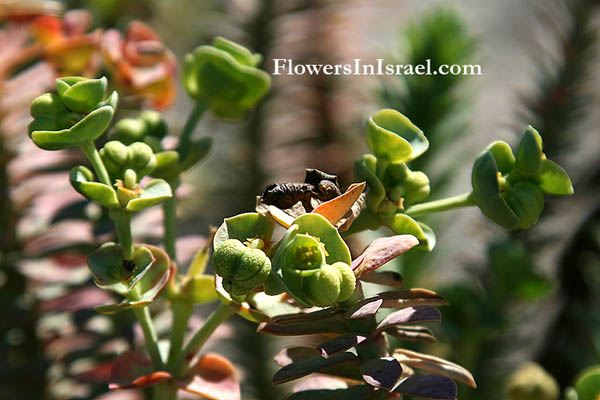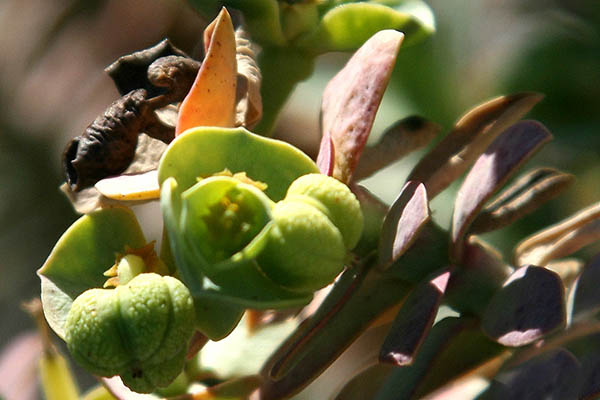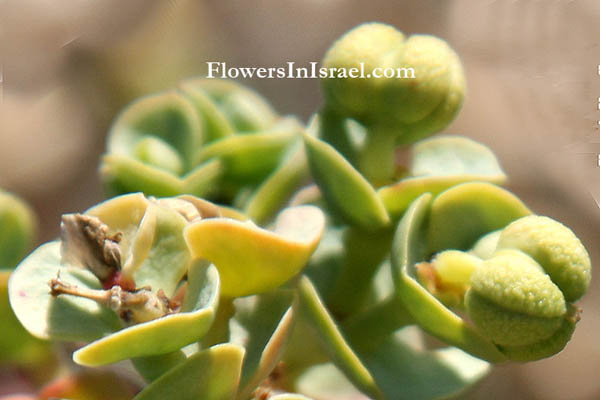Hebrew: חלבלוב הים, Arabic: الفربيون المتوازي
| Scientific name: | Euphorbia paralias L. | |
| Common name: | Sea Spurge | |
| Hebrew name: | חלבלוב הים | |
| Arabic name: | الفربيون المتوازي | |
| Plant Family: | Euphorbiaceae, חלבלוביים |

|
| Life form: | Chamaephyte, semi-shrub | |
| Stems: | Up to 70 cm; multiple stems | |
| Leaves: | Alternate, entire, elliptic-ovate | |
| Inflorescence: | Cyathium | |
| Flowers: | Green; cyathia solitary on a distinct peduncle | |
| Fruits / pods: | Capsule; seeds ovoid-globose, pale grey with a small caruncle | |
| Flowering Period: | April, May, June, July, August | |
| Habitat: | Mediterranean strand | |
| Distribution: | Mediterranean Woodlands and Shrublands | |
| Chorotype: | Mediterranean | |
| Summer shedding: | Perennating |

Derivation of the botanical name: Euphorbia, Εὔφορβος, Euphorbus, after the Numidian physician Euphorbus, physician to Juba II, King of Numidia and Mauretania, about the end of the first century BCE. In classical Greek ευφορβοσ (euphorbos) means well fed. paralias, Greek paralos, "maritime," sometimes used with the sense of "blue like the sea."

|